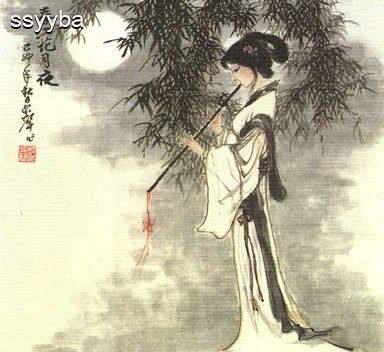Flutes and Drums at Dusk

Flutes and Drums at Dusk (xi yang xiao gu)
Spring Moonlight on the Flowers by the River is one of the most famous Chinese traditional music works. It had been popular among ordinary people before the year 1875, and has become one of the masterpieces in the treasury of Chinese classical music.
It was originally named as Pipa tune Flutes and Drums at Dusk , and was adapted by Liu Yaozhang, a member of Shanghai’s Datong Music Conservatory and renamed as Spring Moonlight on the Flowers by the River by Zheng Jinwen in 1930.
Since 1949, it has undergone many revisions, until now it is a highly polished piece. The intro has a background of musical harmony, and then a pipa is plunked faster and faster, giving out drumbeat-like notes. At the same time, deft fingering on a vertical bamboo flute produces the melody. The contrast between the two instruments - one producing pellet-like short notes by twanging, and the other producing long-drawn-out notes - conjures up a picture of a river in springtime. The technique, often used in folk music, of phrases repeated over and over, and seemingly chasing one another, gives a vivid impression of ripples on water.
The understated melody, the fluid rhythmical meter, the ingenious subtlety, together with random orchestration, combine to paint a tranquil scene of a river on a moonlit night in spring, and is paean of praise to the countryside south of the Yangtze River.
The whole work is divided into ten sections, each having a different title.
Ssyyba
CHINESE-CLASSICAL-MUSIC
top-chinese-classical-music